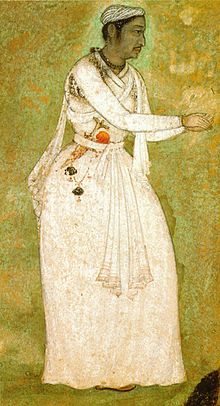Draft:Anuvadi Svara
| Submission declined on 25 October 2024 by Thilsebatti (talk). This submission is not adequately supported by reliable sources. Reliable sources are required so that information can be verified. If you need help with referencing, please see Referencing for beginners and Citing sources.
Where to get help
How to improve a draft
You can also browse Wikipedia:Featured articles and Wikipedia:Good articles to find examples of Wikipedia's best writing on topics similar to your proposed article. Improving your odds of a speedy review To improve your odds of a faster review, tag your draft with relevant WikiProject tags using the button below. This will let reviewers know a new draft has been submitted in their area of interest. For instance, if you wrote about a female astronomer, you would want to add the Biography, Astronomy, and Women scientists tags. Editor resources
|  |
| Submission declined on 22 June 2024 by Liance (talk). This submission is not adequately supported by reliable sources. Reliable sources are required so that information can be verified. If you need help with referencing, please see Referencing for beginners and Citing sources. Declined by Liance 4 months ago. |  |
 An Indian musician who was known to play this note (Anuvadi). |
The anuvadi swara (Sanskrit: अनुवादी स्वर meaning: assonant) is the third prominent used swara (a musical note used in Indian classical music). Anuvadi is a swar that is mentioned in Indian musical literary. Anuvadi note often described as being in harmony, typically the third (Twira Gandhara Third Genre or Komala Gandhara Soft Genre) of a note. These notes are known as companion of the army.
Western Influence
[edit]As in the ancient Greek Pythagorean system, which influenced Western music, only fourths and fifths (intervals of four or five tones in a Western scale) were considered consonant.[1]
Usage
[edit]These are called servants of the raga. For example, in Bhairavi raga, except Ma-Sa which are Vadi-Samvadi respectively, remaining notes of the raga are called Anuvadi. Anuvadi notes are called companion notes. In Raga Yaman, Vadi Ga, Samvadi Ni and the remaining notes - Sa, Re, Tivra-Ma, Pa, Dha are Anuvadi notes. In Raga Khammaj, Ga-Vadi, Ni-Samvadi and the remaining notes - Sa, Re, Ga, Pa and Dha are Anuvadi.
In Indian classical music and phonetics
[edit]Anuvadi Swar represents the resonant or echoing effect produced when a sound is repeated or echoed. This phenomenon is a fundamental concept in Indian classical music and phonetics, where it plays a crucial role in enhancing the aesthetic and emotional impact of musical compositions and recitations. In Indian classical music, Anuvadi Swar creates resonance, depth, and texture in raga performances, emphasizing rhythmic cycles and patterns. It evokes emotions through subtle tone variations, regulates tempo and pace, and explores melodic possibilities. In phonetics, Anuvadi Swar preserves ancient pronunciation and intonation in Vedic chanting and Sanskrit recitation, maintaining phonetic accuracy and amplifying spiritual energy in mantra japa. Techniques such as gamaka, kan, and sparsha are employed to produce Anuvadi Swar effects. Instruments like the Tanpura, Veena, and Flute utilize echoing sounds to create resonance.
Types of Anuvadi Swar
[edit]1. Direct Anuvadi (प्रत्यक्ष अनुवादी): Immediate echo 2. Indirect Anuvadi (परोक्ष अनुवादी): Delayed echo
Significance
[edit]- Enhances musical harmony and rhythm - Creates depth and texture in sound - Important in mantra recitation and chanting
Application
[edit]- Indian classical music (Hindustani, Carnatic) - Sanskrit chanting and mantra recitation - Poetry and storytelling
Anuvadi Swar's role
[edit]- Adds emotional depth to music and speech - Conveys subtle meanings and emotions - Connects listener with the sound
References
[edit]- ^ "Grammar of Music". Pure Tones. Retrieved 17 October 2024.
- ^ "Anuvadi". Encyclopedia Britannica. Retrieved 17 October 2024.
- ^ "Anuvadi Swar". IC Music. Retrieved 17 October 2024.
- ^ "Vadi, Samvadi, Anuvadi, Vivadi, Varjit Swar". Saraswati Sangeet Sadhana. Retrieved 17 October 2024.
- ^ "NIOS Class 10 Hindustani Music Ch 2: Elements of Raga Part 2". FlexiPrep. Retrieved 17 October 2024.
- ^ "Vadi, Samvadi, aur Anuvadi Swar Ki Paribhasha". Indian Raag. Retrieved 17 October 2024.
